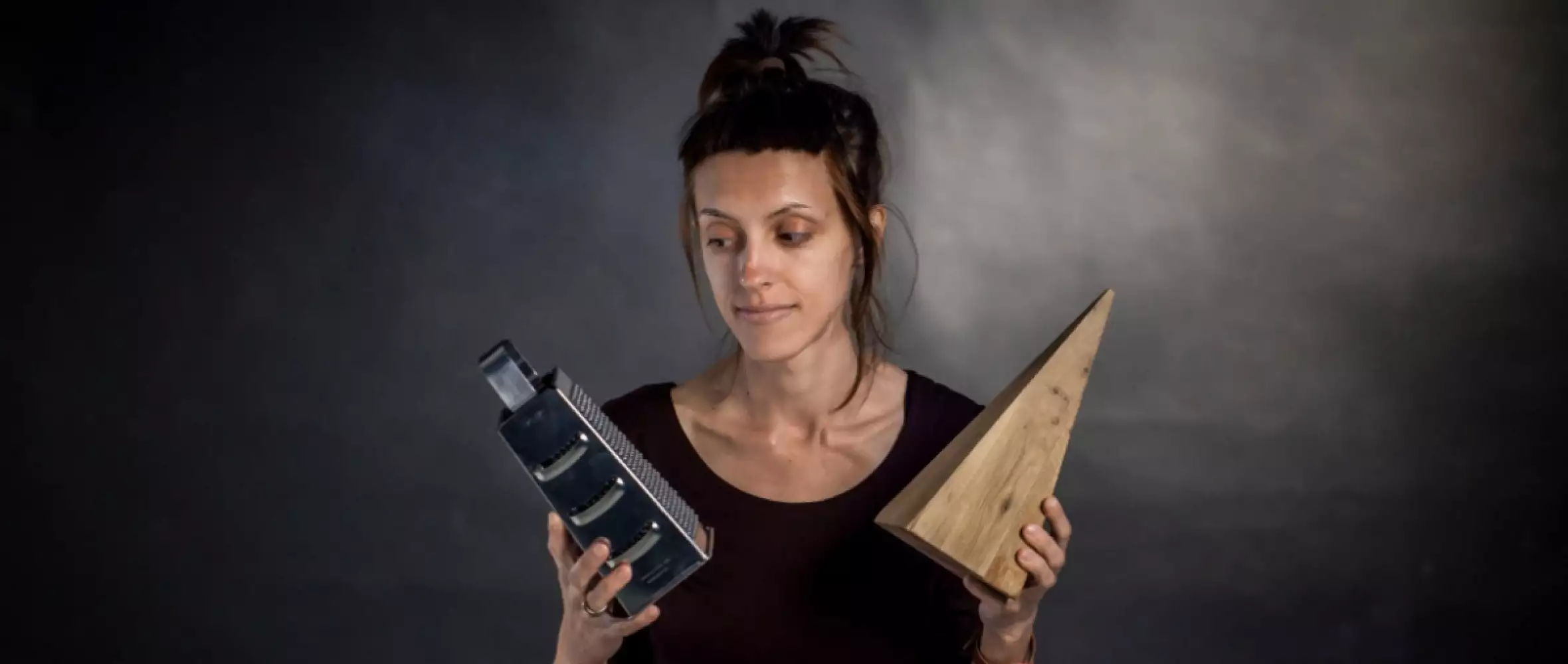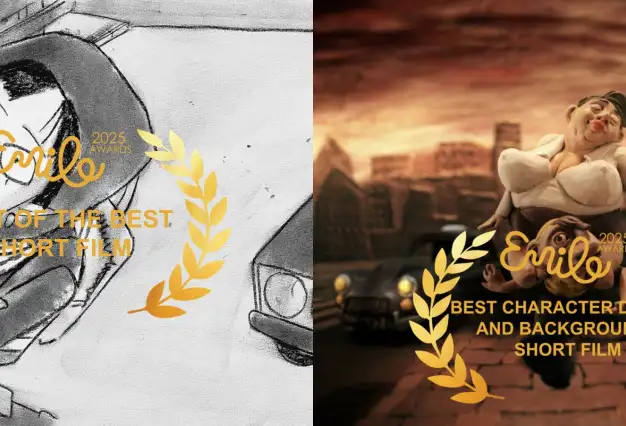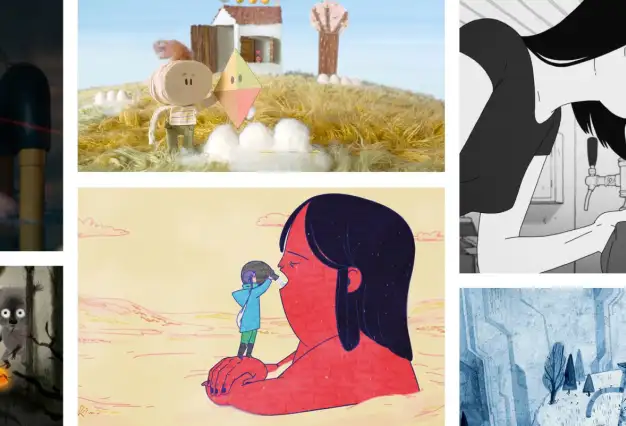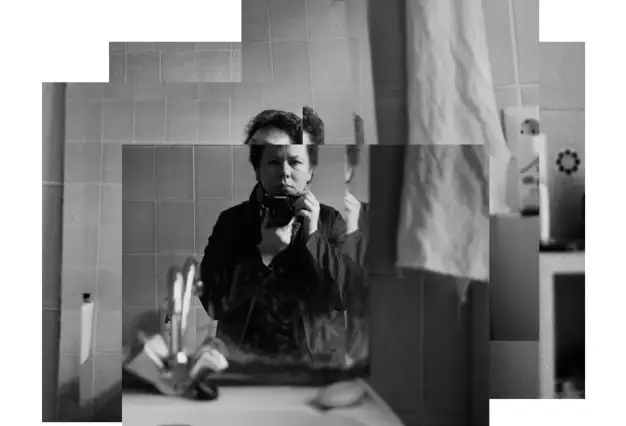
23 January 2020
Personal and Original Daria
Kashcheeva is a major talent in Czech and European animation
Personal and Original Daria
Kashcheeva is a major talent in Czech and European animation

2019 was an exceptionally good year for Czech animated film, thanks in no small part to the innovative and emotionally intense film Daughter. Made by Daria Kashcheeva as a student at FAMU, the father-daughter tale has even been nominated for an Oscar.
Article by Pavel Sladký for Czech Film magazine / Spring 2020
Daria Kashcheeva, born in Tajikistan and currently a student at the FAMU film school in Prague, won the Best Student Film award for her puppet animation film Daughter at the Annecy Festival (2019), where it had its world premiere. She then won a Student Oscar from the US Academy of Motion Picture Arts and Sciences, and as of this writing she has been nominated for an Oscar for Best Animated Short.
The next stop for Kashcheeva is the upcoming Sundance Festival, and that’s just one of the many honors Daughter has earned so far — one of three films in Czech distribution through the Trojhlas coproduction project, which brings together three student films created simultaneously at three Czech art schools: FAMU, UMPRUM, and the University of West Bohemia, in Plzeň.
We’ve all experienced being misunderstood or wronged at some point
The impressive, highly personal, and formally original film Daughter is the wordless tale of the relationship between a father and daughter and more generally the human (in)capacity for mutual understanding. “I’m very interested in psychology,” the director said in an interview with Czech Radio Vltava. “The feeling of being misunderstood, even wronged, by one’s parents is something everyone has been through. Even if we’re not really aware of it, or don’t even remember it, it can influence our behavior in adulthood. I decided this would be a personal screenplay and dug around in my past. Then, when the basic idea for the film came up quickly, I took it as a good sign.”
Despite this being her first puppet film, the format of Daughter is ambitious and innovative — shot in part as if it were a live action film, with the camera movement simulating handheld cinematography, jump cuts, and a great deal of closeups on the puppets’ faces and shifting (repainted) expressions. In order to be able to do this kind of stylization and closeup shooting, Kashcheeva made the largest puppet 40 centimeters (nearly 16 inches) tall.
“I do everything by hand, and I have to consider every single aspect,” says Kashcheeva. “We create a whole new world for this film. This is the justification for making Daughter an animated film, despite the live-action stylization. Plus, animation allows me to depict dreams, and all kinds of transitions between situations, in a different way artistically. And the atmosphere is different.”
Drawing the viewer in with images
The director professes her admiration for para-documentary methods like those used in the films of Lars von Trier, or the social realism of brothers Jean-Pierre and Luc Dardenne. “With their films, I feel like that pulls me into the story, which is what I wanted to achieve with my film. I actually watched the Dardenne brothers’ The Son and von Trier’s Breaking the Waves frame by frame. In live action film, the cameramen, and even the other creative departments, do a lot of things intuitively — a lot of the movements of the actors and the cameras happen naturally, on set. But with animation, every motion is planned and created in advance, so I studied and analyzed my models.”
Not wanting to fall into a stereotype, however, the director says she plans to do her next film without any handheld cameras. “I’d like to work more with live actors, for example,” says Kashcheeva, giving us a peek at what she has in store.
Drawing the viewer in with sound
Daughter also makes intense use of audio. “I have a degree in musical direction,” Kashcheeva reveals. “I used to be a sound technician at a theater in Moscow and worked with music, so I place a lot of importance on the audio aspect.” The director did most of the sound work on the film herself. “What I wanted was for the sound to be as atmospheric as possible and draw the viewer into the story. Even when working on the screenplay, I’m already thinking about the sound.”
Daughter shares motifs and an underlying mood with Kashcheeva’s previous effort, Before the Wind (2016), an intimate film shot in black and white. There, too, we witness the symbolic transformation of a dying person into a bird, which we may interpret as a symbol of loss and inaccessibility, but of course also of freedom. The metamorphosis from person to animal can also be interpreted as a transformation in the sense of the circle of life in Buddhism and other religions.
This is me. This is my love.
Even before Daughter, however, Kashcheeva achieved international recognition with her film To Accept, a vertical film in 9:16 mobile-phone format that won the 2017 Nespresso Talents competition in Cannes. “That win really influenced my career, it gave me my first impulse, faith in myself and that I could make something good,” the director told the magazine Cinepur.
With only slight exaggeration, To Accept might be described as a “declaration of love in pixels.” The three-minute film, narrated by the director’s husband, Alexander Kashcheev, who we also see in the main role, speaks of self-discovery, self-acceptance, and making the leap toward a life of sincerity by discovering the right partner.
Daria and Alexander Kashcheev’s journey together from Moscow to Prague, and the start of her studies at FAMU, were part of a major change in her life, which the director says brought a lot of uncertainty, fresh stimulus, and the promise of a new beginning. All of that left its mark on another, very personal project. The 4.5-minute Prague: A Foreigner’s Perspective (2017) might be termed an ani-documentary. The cutout animation film highlights the experiences of several foreigners, mostly friends of the director living in Prague. The action moves quickly from filling out residence forms and initial formal introductions to the travails of life, and doesn’t shy away from the negatives.
“I was thinking about how Czechs see Russians. That’s how the film came about,” says Kashcheeva. “It doesn’t matter where we live but what’s inside us. Prague: A Foreigner’s Perspective helped me loosen up, in a way, and tune in to the city I’ve been living in for six years now.”
The colorful silence of intimacy
Finally, Kashcheeva’s two-minute film Oasis (2014), about hoping for peace amid the tumult of civilization and the gurgling of everyday life, is dominated by an intensive soundscape and colorful 2D animation done in pencil. A woman walking through a city takes shelter in what seems to be an oasis of heavenly peace but in fact may be only an escapist illusion.
Oasis, like Daughter, is reminiscent of a live-action film, particularly in the way it captures hectic reality and characters “walking into the shot.” More significant, though, is that while the silence in the film is colorful, the bustle of the streets is done in contour, in black pencil, presenting the artist as an introvert and a person with a rich inner world. This is borne out by Kascheeva’s own description of the long, meticulous work of a lone animator as her dream job.
Her portrait is further fleshed out in the film In a Dumpster (2017). As the title suggests, this film employs an unusual perspective, and featured again in one of the main roles of this mostly cutout animation, in which petty household rubbish comes to life in the dark bowels of a dumpster, is the director’s husband.
You can see all of the older short films mentioned here on the director’s Vimeo channel: https://vimeo.com/203516255




